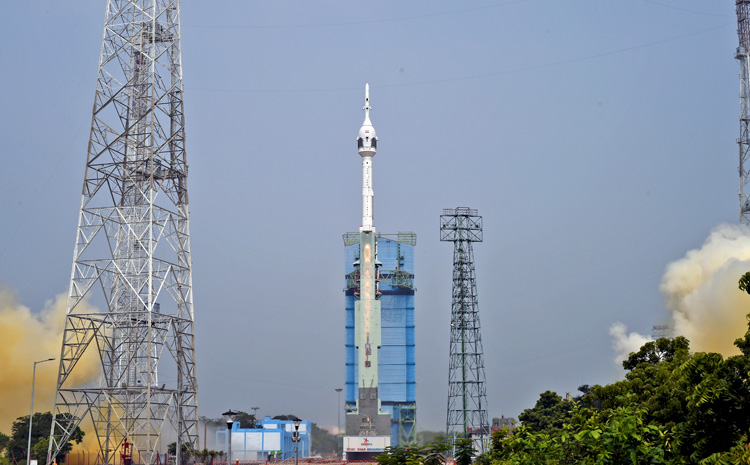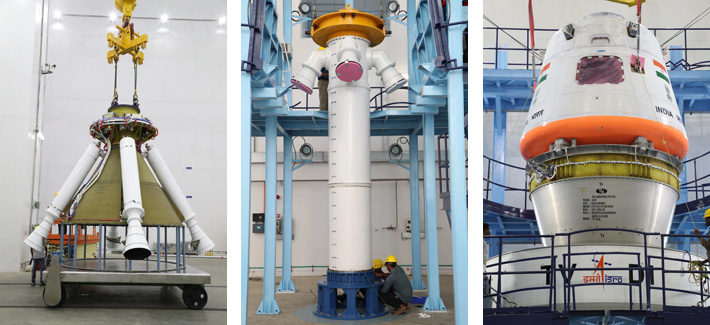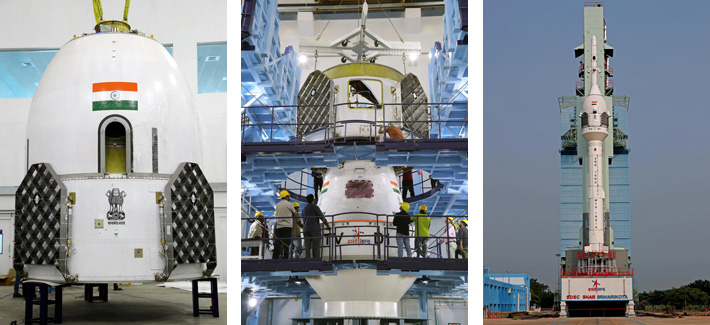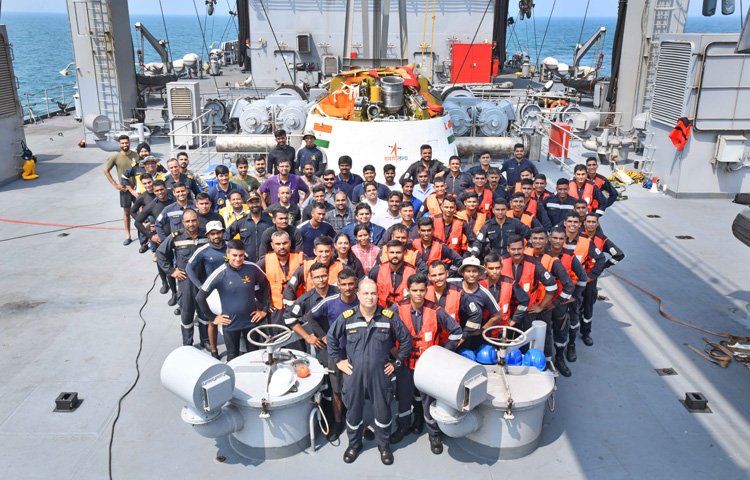INDIAN ARMED FORCES CHIEFS ON OUR RELENTLESS AND FOCUSED PUBLISHING EFFORTS

The insightful articles, inspiring narrations and analytical perspectives presented by the Editorial Team, establish an alluring connect with the reader. My compliments and best wishes to SP Guide Publications.

"Over the past 60 years, the growth of SP Guide Publications has mirrored the rising stature of Indian Navy. Its well-researched and informative magazines on Defence and Aerospace sector have served to shape an educated opinion of our military personnel, policy makers and the public alike. I wish SP's Publication team continued success, fair winds and following seas in all future endeavour!"

Since, its inception in 1964, SP Guide Publications has consistently demonstrated commitment to high-quality journalism in the aerospace and defence sectors, earning a well-deserved reputation as Asia's largest media house in this domain. I wish SP Guide Publications continued success in its pursuit of excellence.
Enhancing Astronaut Safety
ISRO has successfully tested the crucial crew escape system, paving the way for Gaganyaan mission, while the TV-D2 mission aims to perfect crew module uprighting system in splashdown scenarios
 |
The Author is Former Director General of Information Systems and A Special Forces Veteran, Indian Army |

It has was reported in these columns earlier that on October 21, 2023 the Indian Space Research Organisation (ISRO) successfully tested the liquid-propelled single-stage Test Vehicle (TV-D1) indigenous system crucial for the safety of our astronauts - the Crew Escape System, an important prelude to the Gaganyaan mission.
On October 21, 2023, the Indian Space Research Organisation (ISRO) successfully tested the liquid-propelled single-stage Test Vehicle (TV-D1) indigenous system crucial for the safety of our astronauts
The test validated the low and high altitude, and jettisoning motors for safely ejecting astronauts away from the vehicle in emergent situations. Six seconds into flight, the fin enabling system was activated, followed by the activation of the Crew Escape System Pillbox at a speed of Mach 1.25, at an altitude of 11.8 km. The High Energy Motor (HEM) then fired, propelling the vehicle further into the atmosphere. When the vehicle reached Mach 1.21 at an altitude of 11.9 km, the Crew Escape System separated from the rocket booster.


After the success of the crew module abort test, ISRO is planning the TV-D2 mission in 2024, including a crew module "uprighting system", to keep the crew module upright after splashdown in the sea. The mission is to ensure that a crew module, making a splashdown in the sea after a space mission, stays upright and does not get inverted in the water. The basic crew module used in the TV-D1 mission earlier this year did not contain such a system, resulting in the module floating in an upside-down position when recovered by naval divers in the Bay of Bengal.
After the success of the crew module abort test, ISRO is planning the TV-D2 mission in 2024, including a crew module 'uprighting system,' to keep the crew module upright after splashdown in the sea
A crew module uprighting system will be "among multiple systems' to be tested in the TV-D2 mission for the crew module on a new test vehicle scheduled in 2024 before a full-fledged unmanned test flight into space for the crew module on the LVM3 rocket that is going to be part of the Gaganyaan mission. S. Sivakumar, Director of the TV-D1 mission said:

- "The first test of the crew module escape system in the TV-D1 mission, where an abort sequence in the launch phase of a human mission was simulated, has been deemed a complete success after receiving all the data from the systems tested in the mission."
- "One of the biggest satisfactions in the TV-D1 mission was the success of the tricky component of the deployment at a desired angle of the drogue chutes (which bring the crew module from a height of 17 km at a speed of 152 metres per second to a height of 2.5 km from the surface of the sea at a speed of 62.8 m/sec) after the release of crew module from the crew escape system in the abort mission. The drogue chute deployment at the desired angle was a really tricky problem."
- "We will be simulating the heat and pressure situation. In the present experiment, these things were not simulated. In this mission, only an equivalent mass and immersion crew module is used. In the next experiment, we will be putting the equivalent of heat attachments, all the shock monitoring and the control systems in the crew module…this will all be part of the test vehicle D2 flight next year."
- "The two stable positions are upright and upside-down. Now, to avoid the upside-down situation in the real crew module, there will be an uprighting system that will be like some gaseous balloon – something like the airbags in cars that deploy on impact. The crew module will also have to have emergency systems to compensate for failure of the module uprighting system. The recovery aids, like the beacons, have to work well underwater and the sea water dye should get ejected to mark the region of the landing. These are the other parameters that have to be considered. Even if the crew module is in the water in an upside-down position, the communication systems will not be affected since antennas are on the sidewall and "they will always be radiating."
- "The crew module has to now be freshly made with all the control systems and then we have to simulate the crew heat systems and other paraphernalia, we need to add the instrument control system, the uprighting system. All these elements will be put in the crew module."
The crew module uprighting system will be 'among multiple systems' to be tested in the TV-D2 mission for the crew module on a new test vehicle scheduled in 2024 before a full-fledged unmanned test flight into space
According to the paper 'Dynamic Characterisation of the Crew Module Uprighting System for NASA's Orion Crew Module', authored by NASA scientist Ivan Rodrigues Bertaska and other scientists, "Inverted or sideways stable configurations for the CM [crew module] would result in submergence of the hatch doors and communications antennae and an undesirable crew orientation. The CMUS [crew module uprighting system] provides the CM with additional buoyancy to reorient itself into the upright configuration post-splashdown and maintain this orientation for at least 24 hours." NASA is reportedly developing a crew module uprighting system to be used on its Artemis 1 mission to the moon.
As per available data, 47 per cent of all landings during the Apollo, Skylab, and Apollo-Soyuz programmes were reportedly in an inverted orientation, with the nose of the crew module submerged risking crew members while exiting the module. India will be wishing ISRO all the success for the TV-D2 mission and the Gaganyaan missions to follow.





